Old Hedgerows are New Again as More Farmers Embrace Benefits
These living fences are regaining popularity as their ecological advantages become clear.
Old Hedgerows are New Again as More Farmers Embrace Benefits
These living fences are regaining popularity as their ecological advantages become clear.
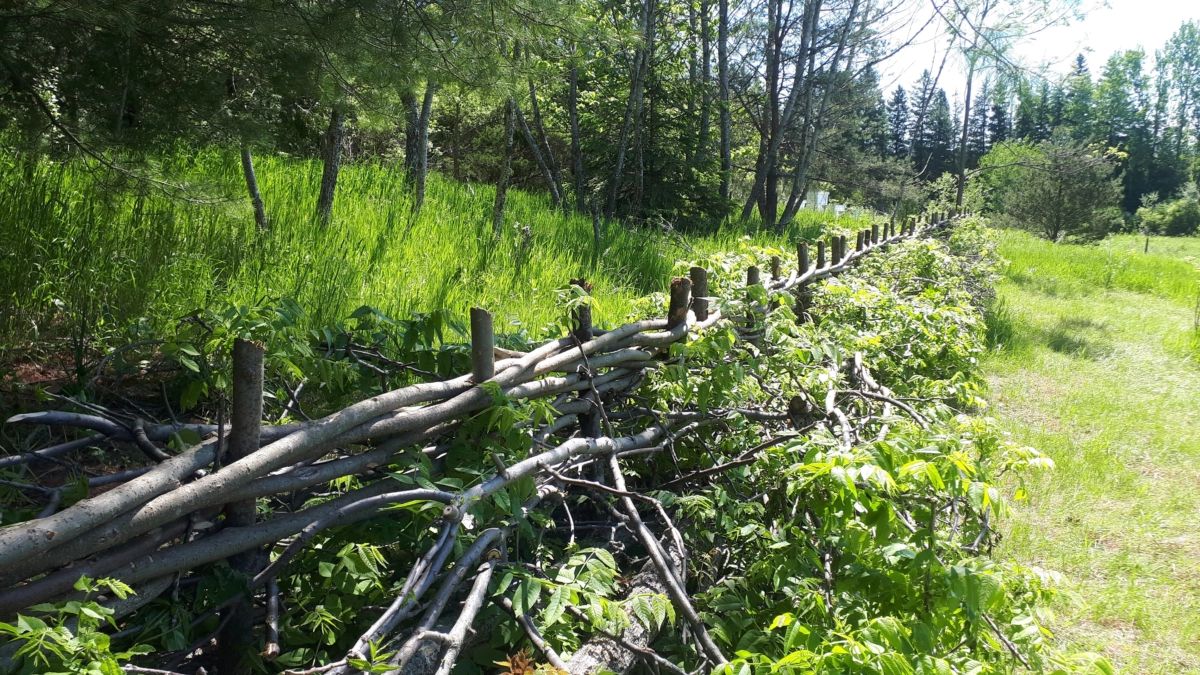
A black walnut hedgerow on Mount Wolfe Farm in Ontario.courtesy of Jim Jones.
For centuries, hedgerows defined the boundaries of agriculture. A hedgerow can be made up of any densely planted growth bordering a field that is cultivated to create a barrier. A traditional European hedgerow is a carefully grown, trained and woven-together series of small trees and shrubs that provide living fencing. But a hedgerow can also mean stands of cultivated scrub brush and flowers that create boundaries between open fields or cropland, which are sometimes also called “shelterbelts.”
Today, many people think of hedgerows as a European phenomenon. Picturing the pastoral fields of England, you may imagine hedges separating grazing sheep from fields of waving wheat. When it comes to North American farming, by contrast, people might picture wooden fences, wire fencing or terracing between one type of crop and another.
Shortly after the Revolutionary War, though, hedgerows were poised to be as much a part of US agriculture as they had been integral to UK farming.
“Around the 1790s, you had an explosion of hedgerow planting in the US,” says Jim Jones, who manages the Hedgelaying in the Ontario Landscape Project for the Waterloo Institute of Innovation and Resilience. “It was a sign of status as a gentleman or nobleman to have control over the landscape. Planting hedgerows was a way of saying ‘I am in control of this wilderness.’ So, gentleman farmers looked back to the European traditions of hedgerows and hedgelaying.”
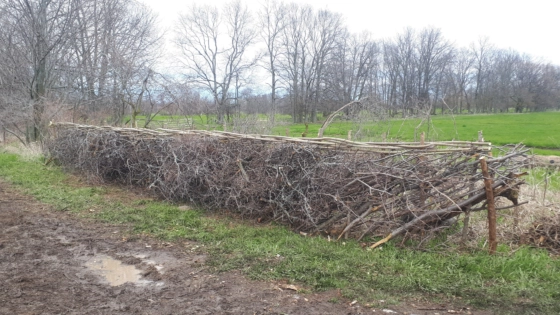
The invention of barbed wire made hedgerows a less popular choice for boundaries on the Western frontier, but they were briefly revived as an integral part of the recovery of the Midwest during the Dust Bowl.
“The first time the importance of hedgerows was really understood [in the US] was in the Dust Bowl era,” says Jones. “Hedgerows were planted as an ecosystem service to provide protection from wind erosion.”
Some midwestern fields are still bordered by hedgerows, but most US farmers don’t plant hedgerows and are skeptical of their benefits, worrying that they might introduce pests or predators to their farmland.
“I think there are still some misconceptions about hedgerows,” says Rachael Long, former farm advisor to the University of California Cooperative Extension. “People are still concerned that hedgerows increase pest populations, rodent populations and weeds.”
North American farmers are also loath to reduce the size of their crop-producing land by adding a living border or to deal with potential difficulties when the hedgerows require maintenance.
“Mechanization is the primary reason why hedgerows have disappeared in North America,” says Jones. “Trees can grow too large or they fall into a field.”
Even in the United Kingdom, hedgerows experienced a downturn in popularity as farmers moved towards more heavy equipment for working their fields and maintaining their boundaries. Paul Lamb is a traditional hedgelayer in the West Country area of Great Britain, where he specializes in hedgerow management and restoration. When he started out as a woodsman and hedgelayer in the early 1990s, hedgelaying jobs were hard to find.
“I was lucky to get perhaps a couple of jobs a year,” he says. “Hedgelaying had become redundant, really. It was a dying trade, a dying art form.”
But it is gradually becoming clear, on both sides of the Atlantic, that the benefits of hedgerows for the farm and the surrounding environment far outweigh potential pitfalls. North American farmers are starting to realize what their European counterparts have embraced for generations.
“In recent years, hedgelaying has become popular again,” Lamb says of his work in the UK, “because of the benefits to wildlife that people now realize hedgerows have. From a conservation point of view, they are higher up on the agenda.”
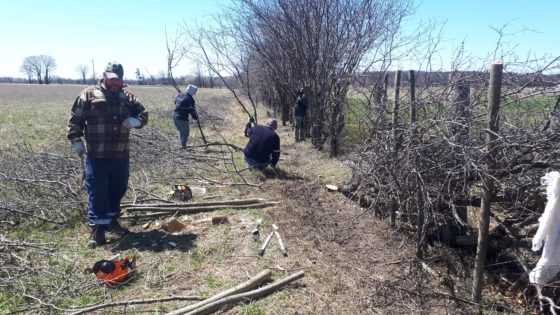
While US farmers have been slower to embrace hedgerows for their ecological benefits, the science of hedgerows as natural havens has become inarguable.
“The biggest benefit of hedgerows is providing wildlife and biodiversity on farmlands,” explains Long. “You will get increased numbers of insects and birds. They help with weed suppression because you are shading out weeds, [and they] help with insect pest control and other things like erosion control.”
One of Long’s studies with UCCE found that hedgerows helped sequester 36 percent more carbon than farmland. Her work has documented that, rather than introducing pests, hedgerows provide a habitat for beneficial insects that will reduce pests on crops. Another study found more than 2,000 species in a hedgerow in Devon, UK, over the course of a year.
“Our research shows that if you have flowering plants around fields, they attract pollinators and predators like ladybugs that are then exported into adjacent crops, resulting in increased yields and lower insecticide use.”
Jones, who is a member of Hedgelink, a UK-based advisory group, says that the benefits of a hedgerow are innumerable. “There are a whole host of what we call ecosystem services,” he says. “We identified that hedgerows improve water quality, so, if you have water running through a field and there is a hedgerow buffer before it goes into the water course, it will slow down the water and the particulates drop out, improving water quality.”
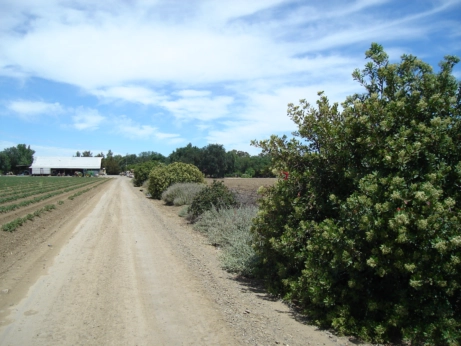
A farmer looking to embrace the benefits of hedgerows as field boundaries first has to identify what kind of boundary they need. Bordering crop lands, hedgerows can be made up of wildflowers and small brush and planted in areas that otherwise could not be farmed, such as under power lines or along flood plains. If a farmer wishes to contain livestock or create a more structured barrier, living fences can be cultivated in the traditional European fashion.
“All broadly deciduous trees will coppice and lay to some extent,” explains Lamb. “Thorny species are preferred because the hedgerows are supposed to be a deterrent to livestock—I call them the original barbed wire.”
Living fences are carefully maintained by hedgelaying, using a technique called pleaching. Pleaching consists of cutting ⅘ through the stem of the plants once they reach suitable size, approximately the diameter of your forearm. The plant can then be laid over at an angle, creating a horizontal fence while the pleach cut calluses over and continues to send up new shoots.
The art of hedgelaying is complex, but in the UK, professional hedgelayers such as Lamb will plant, pleach and maintain hedgerows for countless farms. Here in the US, Jones is working to introduce the skill of hedgelaying through workshops and hedgerow consulting independently and through the Ontario Skills Network.
Long encourages those who don’t have the appropriate land for a living fence to still consider hedgerows. “Some people think they can’t put a hedgerow in,” she says. “But there are some new thoughts coming out for different mixes of plants. If you have an almond or a grape orchard and you feel you can’t put in shrubs and trees, maybe you just do yarrow, mugweed, milkweed, poppies and goldenrod—more perennials, just small, that won’t get really big.”
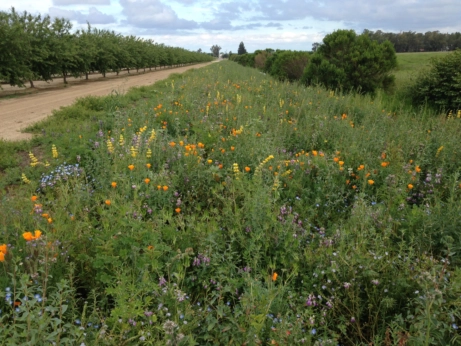
Long notes that once one farmer puts in a hedgerow, the idea is infectious.
“The best thing is if you can find a champion farmer,” she says. “Farmers are always talking to other farmers, and they’ll look over the fence and see what their neighbors are doing and think that looks good, I’ll try that, too.”
Because of this neighbor-to-neighbor effect, Long has noticed that her area, California’s Yolo County, already has more hedgerows than the state average. “There is huge interest where I work,” she says. “I would say maybe 10 percent of the farmers here have adopted hedgerow plantings, while statewide it’s only one to three percent.”
There’s another, less quantifiable benefit to hedgerows, according to Jones. “A hedgerow creates a vista. It can contribute to a sense of place, a sense of belonging in the landscape and a sense of mystery to your landscape.”
Follow us

This work is licensed under a Creative Commons Attribution-NoDerivatives 4.0 International License.
Want to republish a Modern Farmer story?
We are happy for Modern Farmer stories to be shared, and encourage you to republish our articles for your audience. When doing so, we ask that you follow these guidelines:
Please credit us and our writers
For the author byline, please use “Author Name, Modern Farmer.” At the top of our stories, if on the web, please include this text and link: “This story was originally published by Modern Farmer.”
Please make sure to include a link back to either our home page or the article URL.
At the bottom of the story, please include the following text:
“Modern Farmer is a nonprofit initiative dedicated to raising awareness and catalyzing action at the intersection of food, agriculture, and society. Read more at <link>Modern Farmer</link>.”
Use our widget
We’d like to be able to track our stories, so we ask that if you republish our content, you do so using our widget (located on the left hand side of the article). The HTML code has a built-in tracker that tells us the data and domain where the story was published, as well as view counts.
Check the image requirements
It’s your responsibility to confirm you're licensed to republish images in our articles. Some images, such as those from commercial providers, don't allow their images to be republished without permission or payment. Copyright terms are generally listed in the image caption and attribution. You are welcome to omit our images or substitute with your own. Charts and interactive graphics follow the same rules.
Don’t change too much. Or, ask us first.
Articles must be republished in their entirety. It’s okay to change references to time (“today” to “yesterday”) or location (“Iowa City, IA” to “here”). But please keep everything else the same.
If you feel strongly that a more material edit needs to be made, get in touch with us at [email protected]. We’re happy to discuss it with the original author, but we must have prior approval for changes before publication.
Special cases
Extracts. You may run the first few lines or paragraphs of the article and then say: “Read the full article at Modern Farmer” with a link back to the original article.
Quotes. You may quote authors provided you include a link back to the article URL.
Translations. These require writer approval. To inquire about translation of a Modern Farmer article, contact us at [email protected]
Signed consent / copyright release forms. These are not required, provided you are following these guidelines.
Print. Articles can be republished in print under these same rules, with the exception that you do not need to include the links.
Tag us
When sharing the story on social media, please tag us using the following: - Twitter (@ModFarm) - Facebook (@ModernFarmerMedia) - Instagram (@modfarm)
Use our content respectfully
Modern Farmer is a nonprofit and as such we share our content for free and in good faith in order to reach new audiences. Respectfully,
No selling ads against our stories. It’s okay to put our stories on pages with ads.
Don’t republish our material wholesale, or automatically; you need to select stories to be republished individually.
You have no rights to sell, license, syndicate, or otherwise represent yourself as the authorized owner of our material to any third parties. This means that you cannot actively publish or submit our work for syndication to third party platforms or apps like Apple News or Google News. We understand that publishers cannot fully control when certain third parties automatically summarize or crawl content from publishers’ own sites.
Keep in touch
We want to hear from you if you love Modern Farmer content, have a collaboration idea, or anything else to share. As a nonprofit outlet, we work in service of our community and are always open to comments, feedback, and ideas. Contact us at [email protected].by Kirsten Lie-Nielsen, Modern Farmer
November 14, 2023
Modern Farmer Weekly
Solutions Hub
Innovations, ideas and inspiration. Actionable solutions for a resilient food system.
ExploreExplore other topics
Share With Us
We want to hear from Modern Farmer readers who have thoughtful commentary, actionable solutions, or helpful ideas to share.
SubmitNecessary cookies are absolutely essential for the website to function properly. This category only includes cookies that ensures basic functionalities and security features of the website. These cookies do not store any personal information.
Any cookies that may not be particularly necessary for the website to function and are used specifically to collect user personal data via analytics, ads, other embedded contents are termed as non-necessary cookies.
Fascinating article.
We recently published a 78-page how-to guide for hedgerows in western Washington through WSU extension! Check out that and other resources like planting templates and plant lists here: https://hedgerows.extension.wsu.edu/